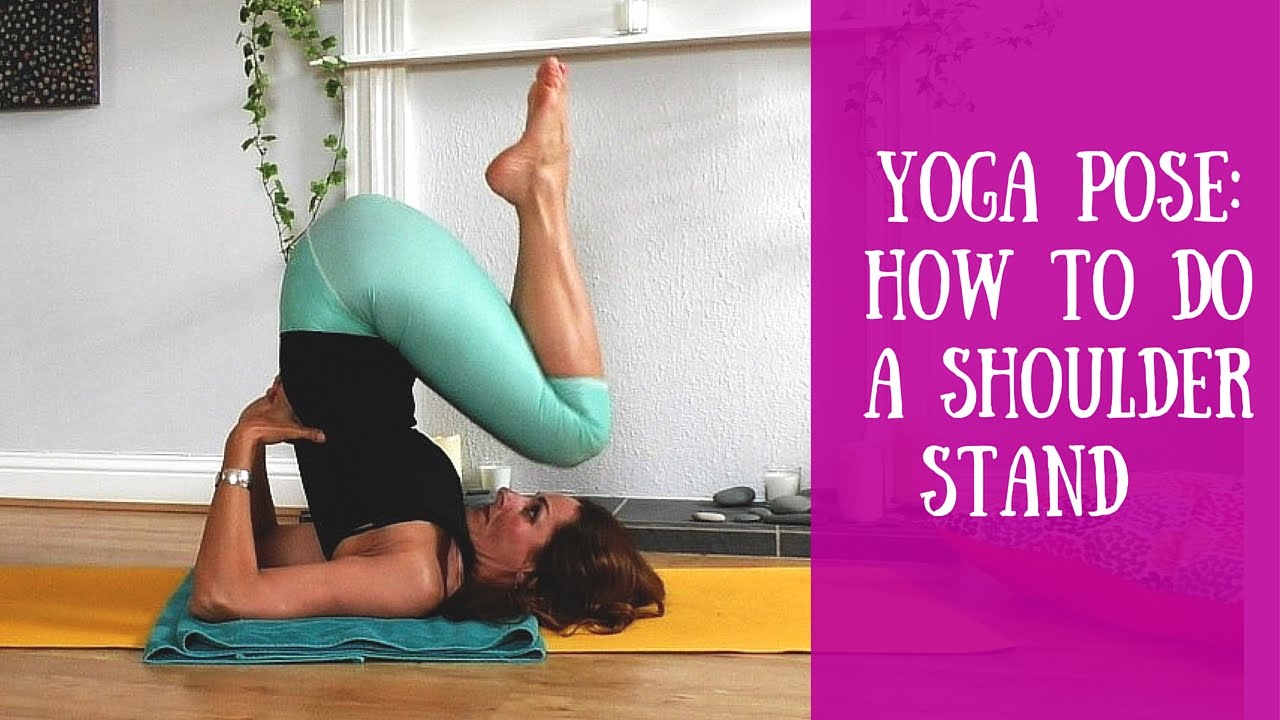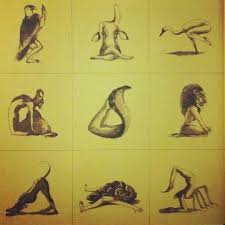
It doesn't matter if you are a yoga instructor with a large body, or not. However, it is important to recognize that everyone can be a part of the yoga community. It's true that yoga classes tend to be dominated by thin students, but fat students deserve to feel accepted, supported and encouraged. Fat yoga teachers can help plus size students improve their awareness of how to move and provide the support that they need.
Having a bigger body can have positive benefits, and it can also mean you'll be in a good position to notice variations in holding patterns. The best fat yoga instructors have a sense for humor and are happy to find new ways to help their students.
Eight years ago, Sarah Harry, a yoga teacher, started Fat Yoga classes for Melbourne. She was one of the first in Australia to offer yoga classes for bigger bodies. She also runs retreats, and is the co-director of Body Positive Australia, a charity that promotes health and well-being for people of all shapes and sizes.

She is also proficient in using a "great Yoga Wall", which can be used to facilitate modifications for students who are larger than average. She also offers teacher-training in body inclusive classes. She is an author as well as a doctor and yoga teacher. She is a self-described fat lady and passionate about body positivity, yoga, and yoga.
Her teaching experience includes fat yoga classes. She also has authored a book, Yoga and Fat. A Practical Guide for Incorporating Big Bodies into Your Yoga Practice. It describes how to modify poses and utilize props to make it easier for larger students to get the most from their practice. Her initiatives include a series on Melbourne-based body positive yoga retreats.
A slow flow class she teaches focuses on fat loss and how to integrate mindfulness with adaptive movement. This class is an accessible and fun way for plus-sized students, to learn how to do yoga and connect with their fellow classmates.
She also works to create profoundly accessible spaces for self-inquiry, and integrates social justice practices into her yoga classes. She believes yoga's goal is collective liberation and encourages people think about how yoga can help them achieve self-care and self love.

It can be more difficult to do certain asanas if you have a larger body. Tree Pose (in which a student holds a branch on their back) is her favorite type of yoga for fat people.
It's vital for fat yoga teachers not only to be able teach the correct poses to their students but also to offer the support and compassion necessary to ensure that everyone leaves class feeling happy. Not only should they be able to teach the correct poses, but they also need to advocate for body diversity, fat empowerment, as well as giving students space to explore spirituality and their physical selves.
FAQ
Which yoga style is best for beginners?
Beginners can get lost in the variety of styles and poses that yoga offers.
Hatha Yoga, which emphasizes physical fitness and stretching, is the most popular form of yoga. It can help reduce stress and improve concentration.
Kundalini Yoga, which involves meditation and breathing techniques, is another popular style. This practice can lead to many health benefits, including better flexibility, balance, or strength.
Yin Yoga is another option for beginners who want to focus on relaxation and calming their minds. Yin Yoga emphasizes holding poses or postures for more extended periods.
Is yoga safe?
Yes! Yoga is generally considered safe and low-risk. You should consult your doctor before you begin a routine of yoga if you have any health conditions or injuries.
Are there any side effects to yoga?
Yoga, like all types of exercise, has its own risks. Injury is the biggest danger. You should be able to safely perform each pose.
If you are just beginning yoga, you might feel dizzy when standing on the head.
This happens because of blood pooling in the brain. You don't have to worry about this, as it will go away quickly.
If you have chest pains while doing downward facing dogs, don't hold your breathe. You will only increase the heart rate and make matters worse.
What length of time do yoga classes last for?
Most yoga classes run anywhere from 45 minutes to 90 minutes. Some teachers offer shorter or longer sessions, at different times during the week.
Statistics
- Lock in 25% off your Founding Member rate. (corepoweryoga.com)
- The American Psychological Association recently shared that 84% of American adults feel the impact of prolonged stress (5). (healthline.com)
- About one in seven U.S. adults practiced yoga in the past 12 months, according to a 2017 national survey. (nccih.nih.gov)
- The people in the yoga group were 37 percent more likely to have quit smoking by the end of the 8-week program. (nccih.nih.gov)
- Start your Fall off right with 20% off All Access Membership when you sign up by 9/25! (corepoweryoga.com)
External Links
How To
Yoga is a good exercise?
Yoga isn't just for people who want to lose weight. It also helps you develop flexibility, balance, coordination, strength, focus, and calmness.
Yoga is not just exercise; instead, it's an art form. These poses can be used to help you relax and meditate. They improve posture, concentration, and respiration.
The term "yogi" refers to someone who practices yoga. Yogis follow various forms of yoga, including Hatha, Ashtanga, Iyengar, Vinyasa, Bikram, Kundalini, Yin Yang, and Restorative.
There are many types and styles of yoga. But they all share similar goals. Each style focuses on different aspects. Yoga styles include Hatha, pranayama (meditation), and pranayama (pranayama).
These yoga moves don't require any equipment
-
Sun Salutation: This series of 12 postures begins with a forward bent, and then 10 additional poses.
-
Warrior Pose - While holding a stick or staff, a warrior pose is done.
-
Triangle Pose-This pose requires you to lift one leg behind you while bending at the knee.
-
Standing Forward Bend: This pose involves sitting straight up on the ground and folding forward at your waist.
-
Seated Twist - This pose is performed while seated on a chair or mat.
-
Cobra Pose- This is when you are lying flat on your stomach with your arms extended overhead.
-
Child's pose - This is when you are lying on your back, face up.
-
Cat/Cow Pose: This combination of a cow and cat pose is called the Cat/Cow Pose. As you lie face down, lift your upper body off of the ground. Roll over on your back and place your hands underneath your shoulders.
-
Head tilt - This is a pose where you tilt your head back while keeping your eyes open.
-
Shoulder stand - This position involves standing straight up with your arms and feet raised above the head.
-
Tree Pose- You can achieve this pose by kneeling on one knee with your hands under you shoulders.
-
Bow Pose: This pose requires you to bend forward from the hips, and then place your palms on ground.
-
Corpse Pose: This pose can only be held for five seconds.
-
Mountain Pose – This is a pose known as mountain pose. Your spine should be straightened and you must stand tall.
-
Legs Up the Wall Pose- This pose can be achieved by hanging upside-down at a wall.
-
Side Angle Pose - This pose is accomplished by leaning against a wall and putting your right arm next to the wall.
-
Plank Position- When you lie on your stomach and extend your left hand and right foot apart, you can achieve this position.
-
Bridge Pose: This pose can be achieved by balancing on your elbows or toes.
-
Reverse Table Top Position - You can achieve this pose by lying on your stomach and reaching towards the ceiling.
-
Handstand: This pose requires balance as well as strength. To do this pose, you can either hold yourself between two walls or a door frame.
-
Half Moon Pose also known as Hero Pose. You can perform it by standing on your hands or toes.
-
Headstand (or Handstand), - This pose requires great balance and strength. You can perform this pose either on a wall or using a doorframe.
-
Forearm Balance: This pose requires that your forearms rest on the tabletop.
-
Spinal Twist - This pose lies on your belly while reaching your arms.
-
Supported Bound Angle Pose - This pose requires balance and support. You will need to find a sturdy object like a tree branch or an old beam to lean on.
-
Wide Leg Forwardfold - To achieve this pose, spread your legs apart while touching your toes.
-
Single Pigeon Pose -- This pose is similar in style to the forward fold with one leg, but it only involves one leg.
-
Extended Puppy Dog Pose - This pose is very relaxing. This is done by stretching your legs outwards and bending your knees.
-
Seated Forward Bend - This pose is sitting cross-legged and stretching your hamstrings and calves.
-
Crow Pose – This pose can be difficult but rewarding once you are able to master it. The trick is to raise your arms higher than your head and lower them so that they touch the ground.